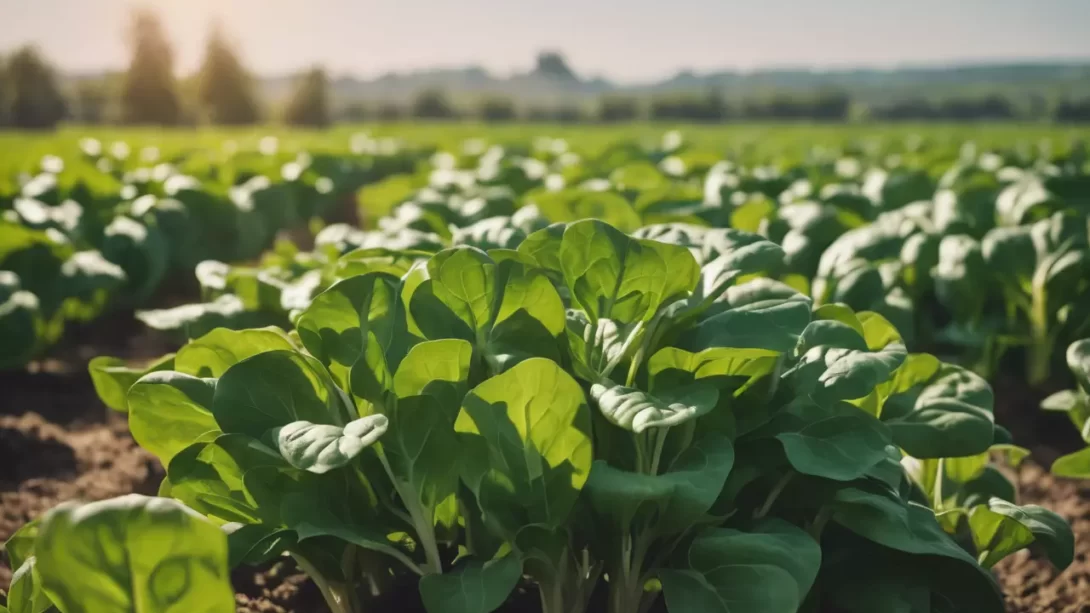Spinach, a leafy green vegetable, is well-known for its rich nutrient content and versatility in cooking. A common question among spinach enthusiasts is whether the stems of spinach, which are often discarded, are edible and nutritious. This article addresses this query, exploring the possibilities of utilizing spinach stems in various culinary ways.
Nutritional Profile of Spinach Stems
Spinach stems are not just edible but also nutritious. They contain similar nutrients to the leaves, although in varying proportions. Rich in dietary fiber, the stems can aid in digestion. They also contain vitamins and minerals, including vitamin C, iron, and calcium, albeit in smaller amounts than the leaves. The stems of spinach offer a way to increase your intake of essential nutrients while minimizing food waste.
Culinary Uses of Spinach Stems
Spinach stems, with their slightly more robust texture compared to the leaves, can be used creatively in cooking. They can be chopped and added to soups, stews, and stir-fries, providing a pleasant crunch and mild flavor. Another option is to blend them into smoothies or juices, along with other fruits and vegetables, for an added nutritional boost.
When preparing spinach stems, it’s important to thoroughly wash them to remove any dirt or grit. For a softer texture, the stems can be blanched or steamed before being added to dishes. This is particularly useful in recipes where a more tender consistency is desired.
Incorporating spinach stems into your diet is not only a nutritious choice but also an environmentally friendly one, as it helps in reducing food waste. The versatility of these stems in cooking allows for a wide range of culinary experimentation, from savory dishes to healthy drinks.
Texture and Flavor Profile
The texture of spinach stems is noticeably different from the leaves. They are firmer and have a bit more crunch, which can add a pleasant texture contrast in many dishes. Flavor-wise, spinach stems are milder and slightly more earthy compared to the leaves. This subtle flavor makes them a versatile ingredient that can blend well with a variety of other foods without overpowering them.
Potential Health Benefits
Including spinach stems in your diet can offer several health benefits. The additional fiber content from the stems can aid in digestion and contribute to a feeling of fullness, which can be beneficial for weight management. The vitamins and minerals present in the stems, such as vitamin C and iron, play vital roles in maintaining overall health, supporting immune function, and aiding in the absorption of other nutrients.
Considerations and Precautions
While spinach stems are nutritious and safe to eat, there are a few considerations to keep in mind. For those with digestive issues, the high fiber content in the stems might cause mild discomfort, so it’s recommended to start with small amounts. Additionally, as with any produce, it’s important to ensure that spinach, including its stems, is thoroughly washed to remove any pesticides or contaminants.
When preparing spinach stems, especially the thicker ones, it’s advisable to remove any stringy parts, as they can be tough and difficult to chew. This can be done by making a small cut at the base of the stem and peeling away the strings.
Creative Recipes Incorporating Spinach Stems
To fully utilize spinach stems in your cooking, here are some innovative recipe ideas:
- Spinach Stem Pesto: Blend spinach stems with garlic, nuts, Parmesan cheese, olive oil, and a squeeze of lemon for a unique twist on traditional pesto. Use it as a pasta sauce, a spread for sandwiches, or a dressing for salads.
- Stir-Fried Spinach Stems: Sauté chopped spinach stems with garlic, soy sauce, and a touch of sesame oil for a simple yet flavorful Asian-inspired side dish.
- Spinach Stem Soup: Add chopped spinach stems to vegetable or chicken broth, along with other vegetables like carrots and potatoes, for a hearty and nutritious soup.
- Pickled Spinach Stems: Create a tangy snack by pickling spinach stems in a mixture of vinegar, water, sugar, and spices. This can be a great addition to salads or served as a garnish.
- Spinach Stem Dip: Blend cooked spinach stems with cream cheese, sour cream, and seasonings of your choice to make a delicious and healthy dip.
Conclusion
Spinach stems are not only edible but also a valuable source of nutrition and flavor. Incorporating these often-overlooked parts of the plant into your diet is a smart and sustainable culinary practice. Whether used in pesto, stir-fries, soups, pickles, or dips, spinach stems offer versatility and health benefits. By using the entire spinach plant, including the stems, you can enjoy the full range of flavors and nutrients it has to offer, while contributing to reducing food waste in your kitchen. So next time you cook with spinach, think twice before discarding the stems and explore the various ways they can enhance your meals.



